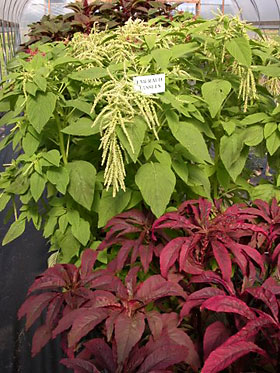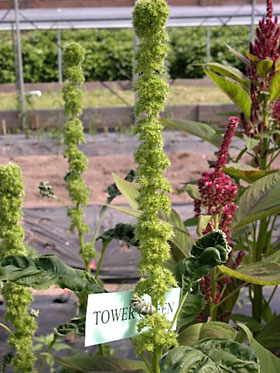Amaranthus caudatus and other species

Propagation:
- Amaranth is propagated from seeds and may be transplanted, although its rapid seedling growth (4 to 5 weeks to transplanting) makes direct sowing also an option.
- Seedlings tend to be weak and spindly, and require high light and low N fertility (50 to 100 ppm N) to control excessive growth before transplanting.
Growing:
- A native of the Tropics, amaranth grows best in 70 to 90 F day temperatures, and makes rapid growth in these conditions.
- At 9 x 9 in. spacing, the plants of many varieties grow to 4 to 6 ft. tall, and develop thick stems that are useful only in presentation bouquets.
- Pinching at node 6 to 8 would reduce stem diameter and stem length, and improve usefulness of the cut stems, but may benefit from wider spacing (12 x 12 in.).

Varieties:
- Amaranth has a number of varieties and species that can be used as cut flowers.
- Some are harvested for their plumy flower stalks, with bright red, green or dark purple inflorescences, that may be either hanging down like ropes, or standing upright.
- Others have inconspicuous flowers but spectacularly-colored foliage of red and yellow.
Postharvest Handling:
- Species and varieties that produce showy inflorescences last about a week in water at room temperature.
- Flowering species should be harvested when three-quarters of the florets are open.
- Species grown for their colorful foliage (eg. Amaranthus tricolor) have a short vase life of about 5 days.
For more information, see: Armitage, A.M. and J.M. Laushman. 2003. Specialty Cut Flowers, 2nd Edition. Timber Press, 586 pp. Available through ASCFG.


